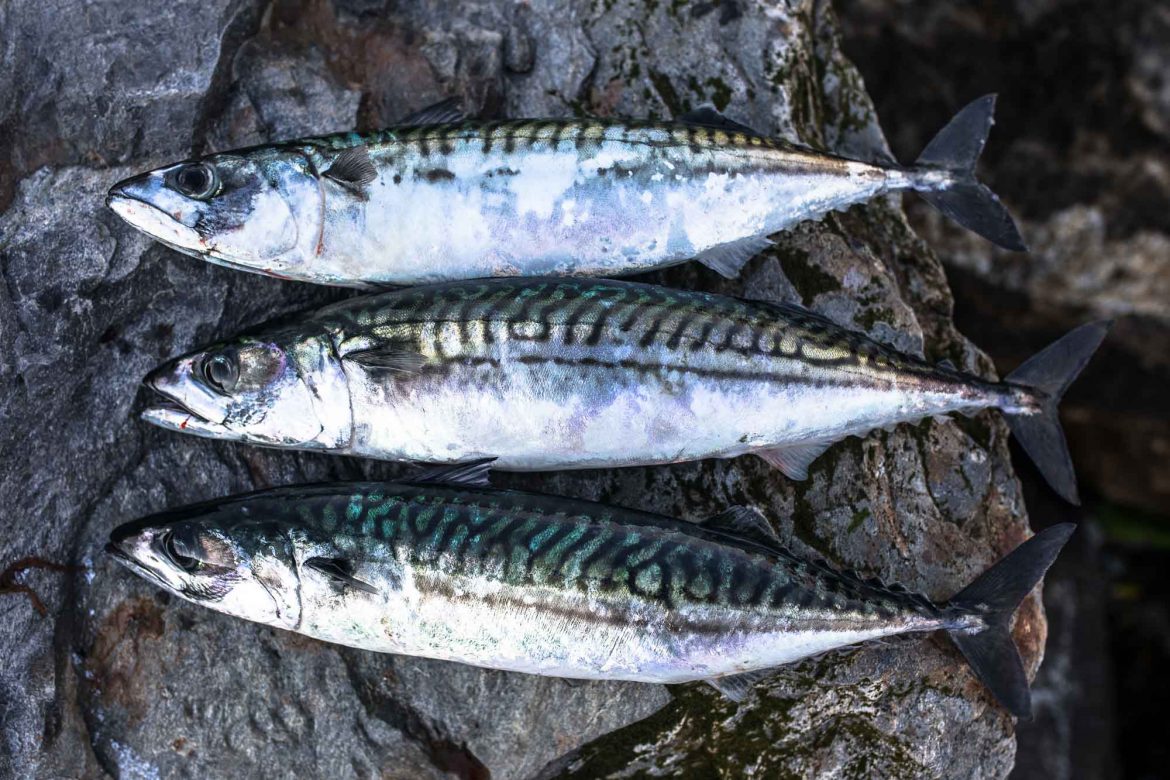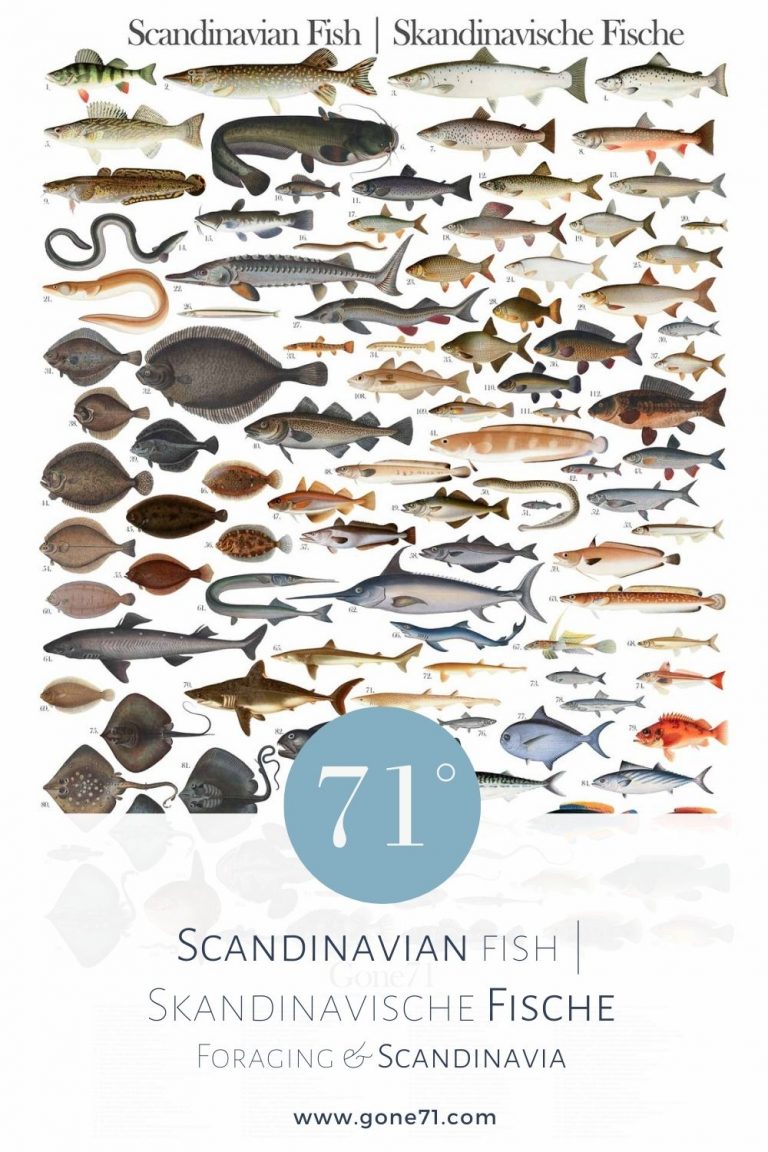Mackerel (Scomber scombrus) is a pelagic fish that is very common in the North Atlantic and along the Norwegian coast. It has a characteristic appearance with black stripes along the body side, and is among the most famous fish in southern Norway, both as a food fish, for sport fishing and as a sign of summer. The species makes long migrations and enters the Norwegian coast in the summer. Due to its high content of Omega-3 acids Norwegian mackerel is considere an exceptionaly healthy food source. By far the best way to enjoy it, is fresh!
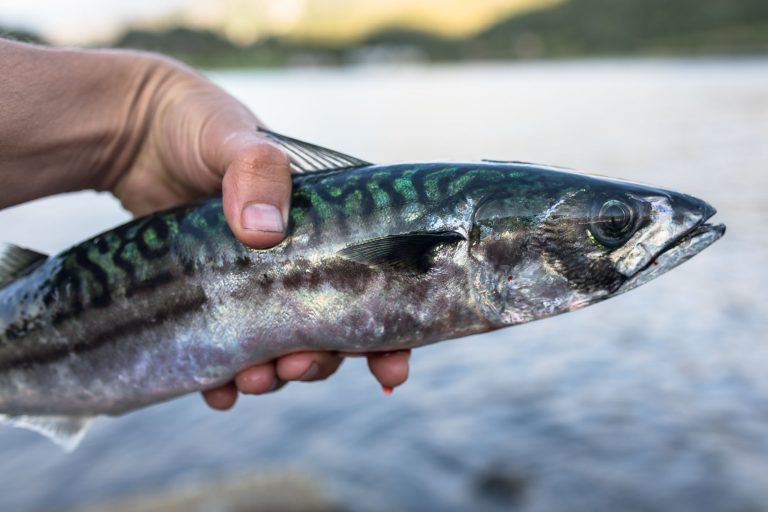
Fishing for mackerel
Mackerel is a highly sought after species both in commercial fishing and in sport fishing. Fishing for mackerel takes place mainly in the summer when they arrive in big numbers close to the shores. These fish have a very muscular body and put up a big fight. You can often encounter them trailing swarms of herring. Mackerel are not very picky when it comes to feeding behaviours and most lures with a fast action work in our experience. Traditionally mackerel are usually fished with “pilks” or “pirks” but spoons, jigs or even spinners might do the job as well. When fishing from shore, try to real in fast and steady. If you fish from a boat you can also try a multi-hook set up (pater noster) along with bait as pieces of herring, shrimp, mussles or something similar.
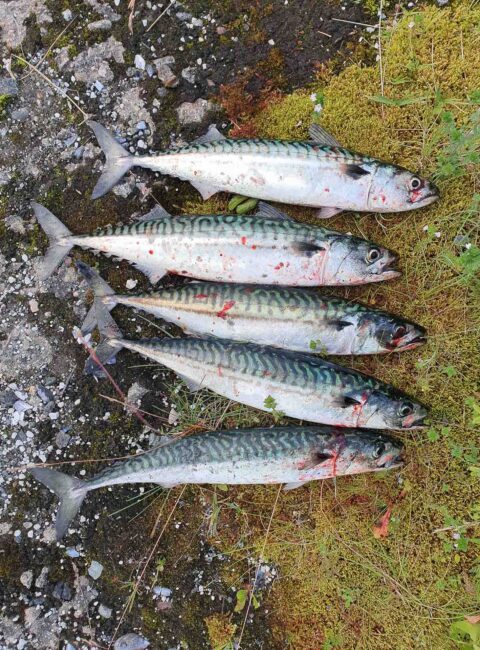
Appearance of mackerel
The body is coil-shaped and streamlined. The color drawings and the small fins behind the two large dorsal fins mean that mackerel cannot be confused with other common fish species in Norway.The back shines in green or blue and along the sides are a series of irregular dark bands. The belly side never has stains or streaks. The shells are small, and the body feels soft when you touch it.
The mackerel does not have a swim bladder and can therefore quickly change depth. It must always be in motion for enough oxygen-rich water to flow through the gills. Exceptionally large specimen can grow up to a length of 66 cm and a weight of 3.5 kg. A more usual size however is up to 40 cm and 700 g.
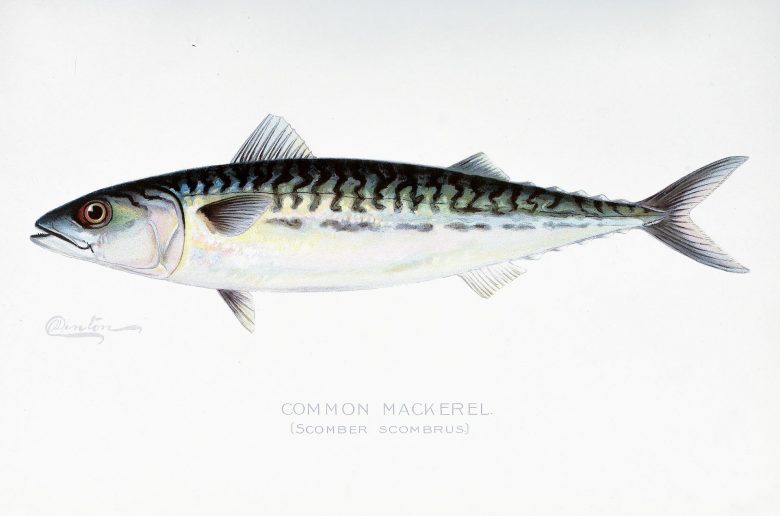
What do mackerels eat?
The most important food for mackerel is plankton, such as crayfish and krill, which are filtered out of the water using the gills. It also catches larvae, worms, herring and other small fish. Mackerel hunt basically for everything that is presented to them and are therefore a fairly easy prey. Cannibalism is not uncommon either. During the colder periods of the year, mackerel absorb little or no food.
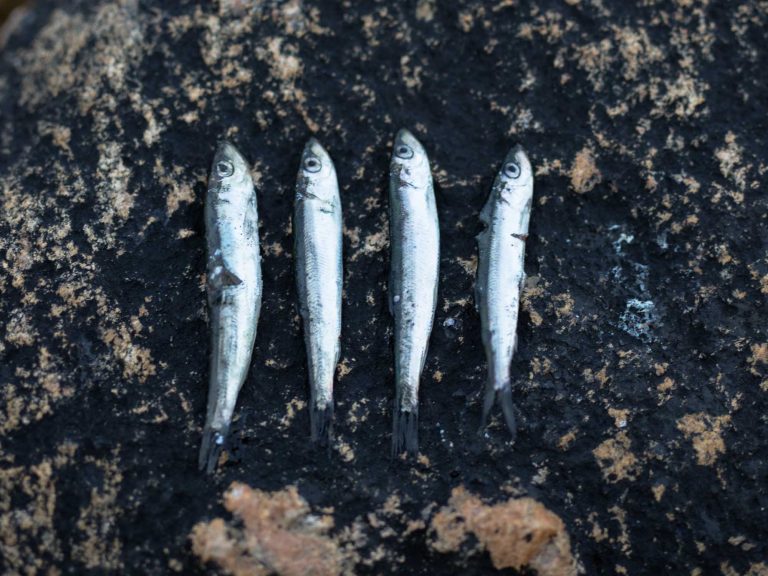
Mackerel as food source
Mackerel is an excellent food fish and is eaten pickled, cooked, fried, grilled and smoked. Mackerel in tomato is a popular spread in Scandinavia. In Norway, mackerel has traditionally only been eaten in the east and south. In other parts of the country, mackerel has been considered an “unfish”, in line with anglerfish and catfish. Persistent stories that mackerel are carrion and corpse-eater remain to this day.
Nevertheless, the content of omega-3 fatty acids is high, and mackerel is considered a very healthy food. Elsewhere in the world, related species can contain a lot of mercury, so one must limit the intake, but mackerel caught in Norway is usually safe to eat.
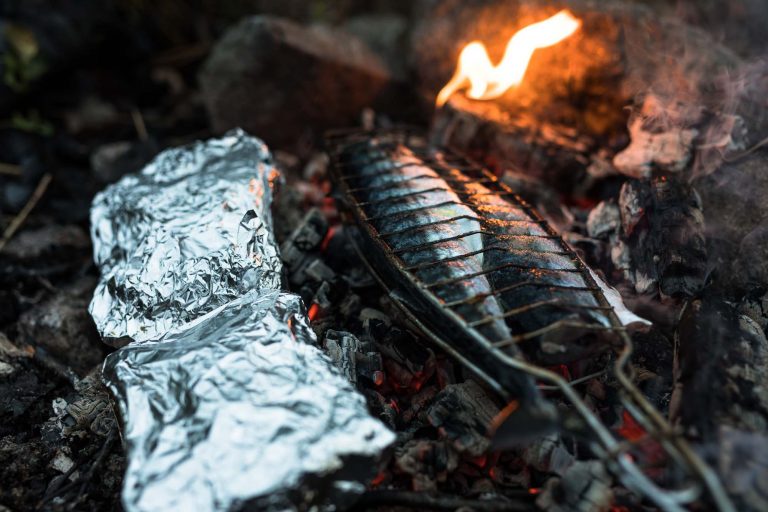
Mackerel in the kitchen
We love mackerel and think it’s one of the most underrated fish in Scandinavia. Along the coast to Thinauf to Trondheim, mackerel can be caught almost anywhere in summer and offer a really welcome change from cod, coalfish and co.
Mackerel tastes best (to us) when it is processed freshly caught. A grilled fresh fish on the campfire or in a tasty stew is therefore the measure of all things for us.
Cleaning and preparation of mackerel
We find it best to fillet the mackerel before processing. In principle, filleting mackerel is very easy and a bone-free fillet can be made with little effort. With the right technique, the fish do not even have to be gutted. Rinse the fresh fillets well before further processing.
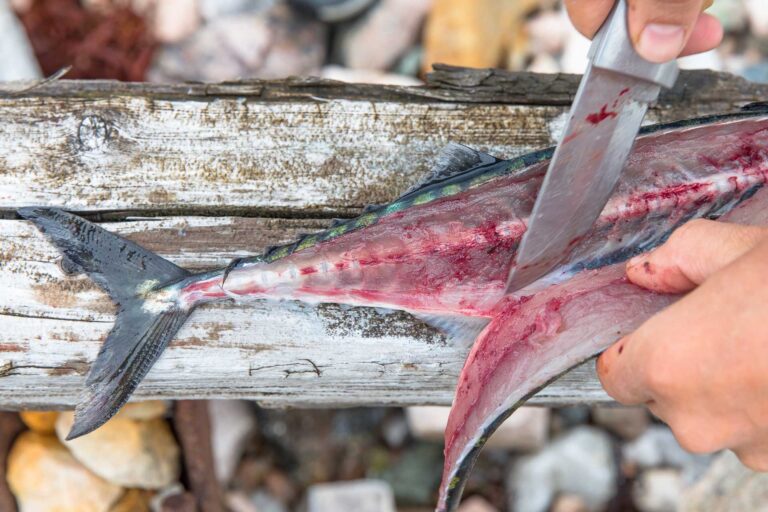
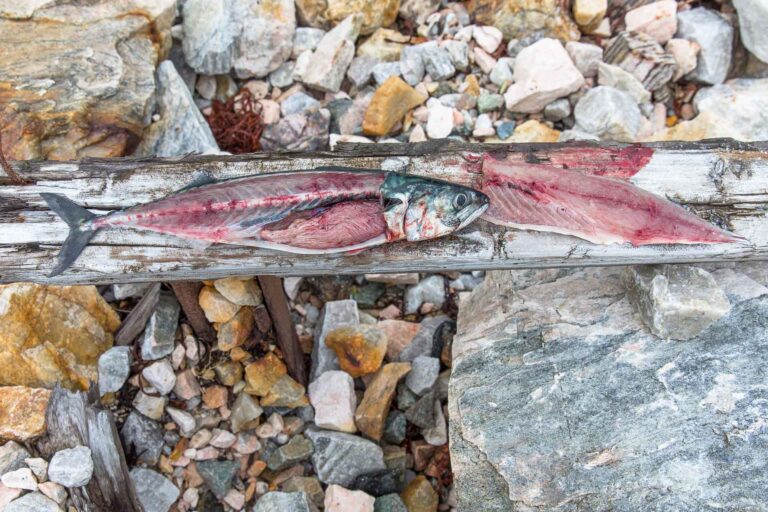
Preserve mackerel (when traveling) in olive oil
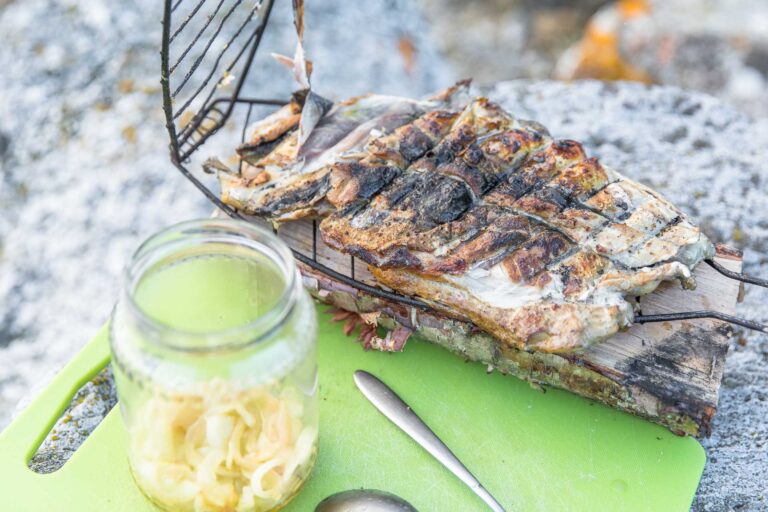
To do this, we put the freshly caught roasted or smoked fillets in olive oil together with braised onions. Don’t forget to take off the skin after the cooking process! We use the mackerel either directly from the jar or processed in fish dishes over a period of three weeks. Properly prepared and sterilized, nothing speaks against storage for several months.
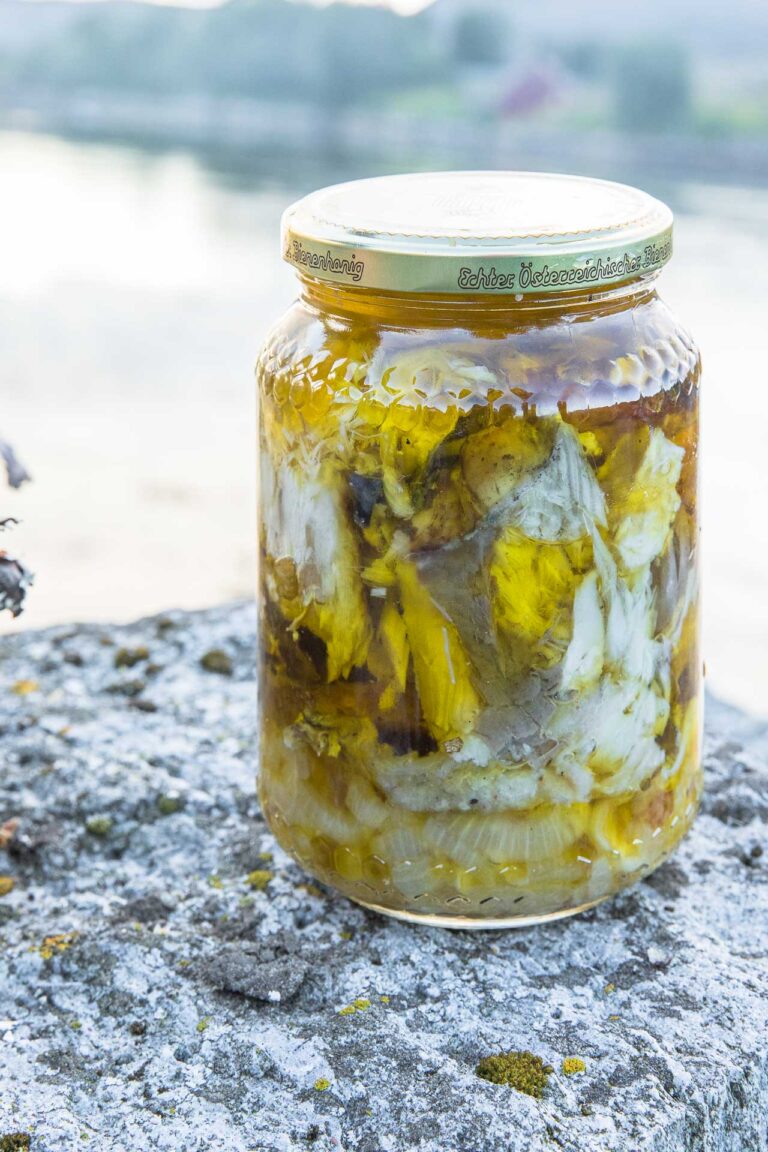
Fire Braised Mackerel Stew Recipe
One of our all-time favorite recipes is Fire Braised Mackerel Stew. The dish is very easy to prepare and tastes wonderful. Served with pasta or simply a piece of bread in the wilderness, the Scandinavian ambience can be fully savored.
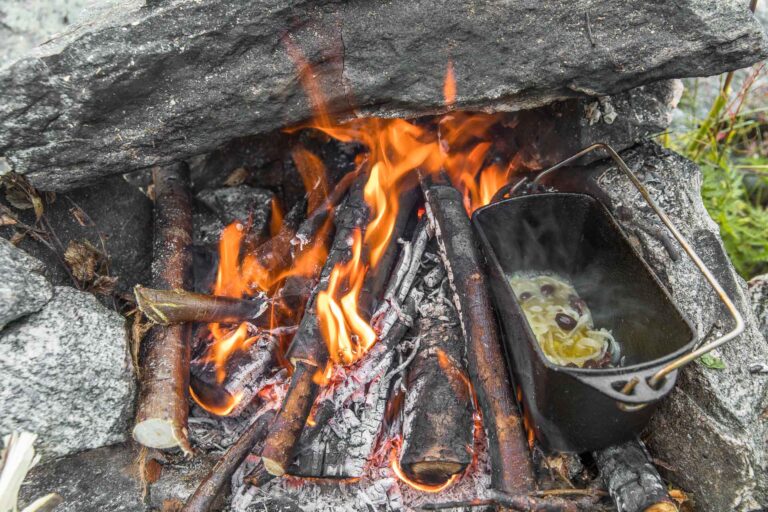
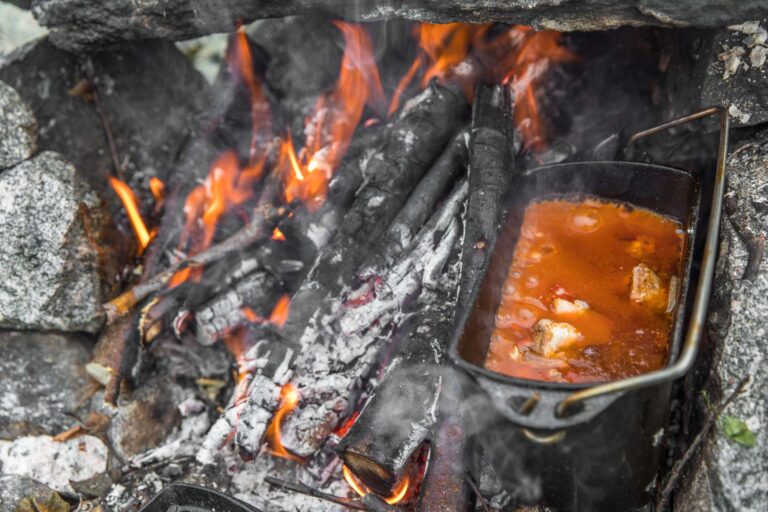
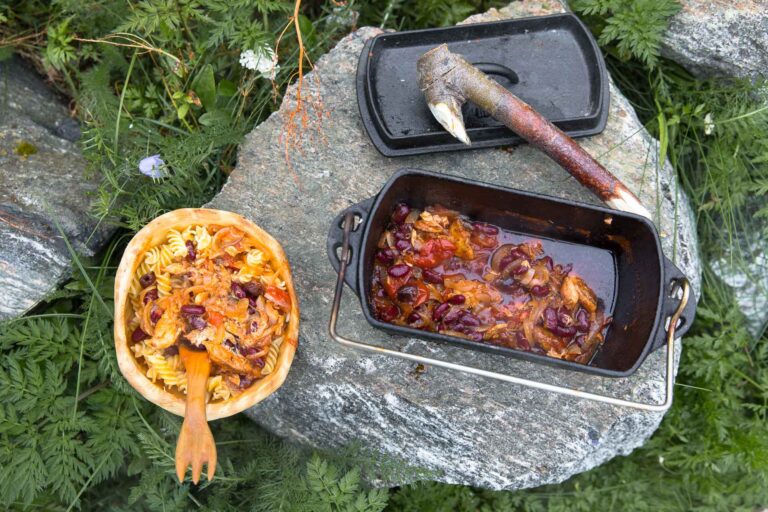
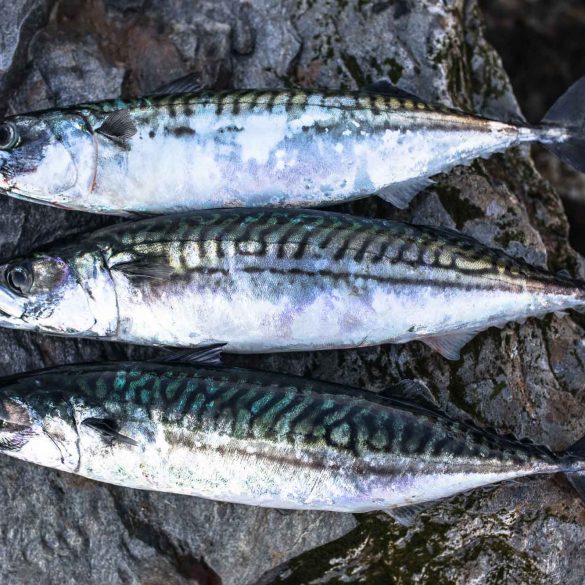
Fire Braised Mackerel Stew
Ingredients
- 2 fresh mackerel
- 1 onion
- olive oil
- Salt, pepper
- 1 pinch of sugar
- 1 can of chopped tomatoes
- 100 ml white wine
- kidney beans
Instructions
- Fillet the fresh mackerel and prepare for further processing
- Roughly chop the onion and sauté in olive oil
- Place the mackerel fillets with the onions and fry briefly
- Then deglaze with white wine
- Add the chopped tomatoes and kidney beans
- A pinch of sugar usually refines the flavor of the tomatoes (as needed)
- Salt and pepper as required
- Simmer for at least 20 to 30 minutes.
- Serve with pasta, rice or bread as a side dish
Notes
For cooking over the fire we use a special cast-iron pot that is particularly suitable for preparing such dishes. Be careful when handling such pots - they are very hot all around!
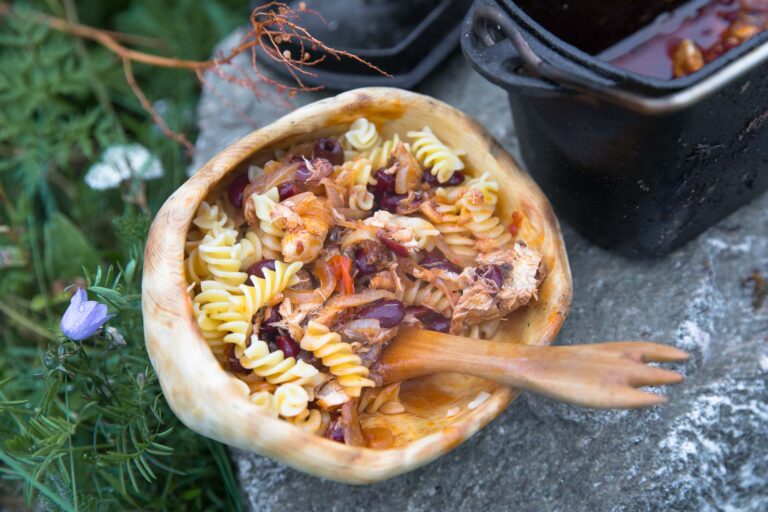
Other facts about mackerel
Distribution of mackerel
The mackerel is a distinct shoal fish and the shoals can be huge with reported sightings of severeal km in length and diameter. In summer, mackerel live pelagically in the upper water layers where they become a great game fish to tackle from shore. In winter it stays at greater depths down to 250 m.
Large mackerel can travel several thousand kilometers in a year with the largest and most experienced individuals migrating the farthest. Mackerels overwinter outside Western Norway and in the outer part of the Norwegian Channel.
How do mackerel reproduce?
Most of the spawning in the North Atlantic takes place near the coasts between May and July. An female can spawn uo to 450,000 eggs during a season. The eggs float freely in the water and hatch after 5-7 days. The larvae drift with the ocean currents until they are approx. 10 mm and then move on to a more active lifestyle. One-year-old mackerel is about 21 cm, and two-year-old mackerel 28 cm. Sexual maturity occurs when it is around 30 cm long. Mackerel can be over 20 years old.
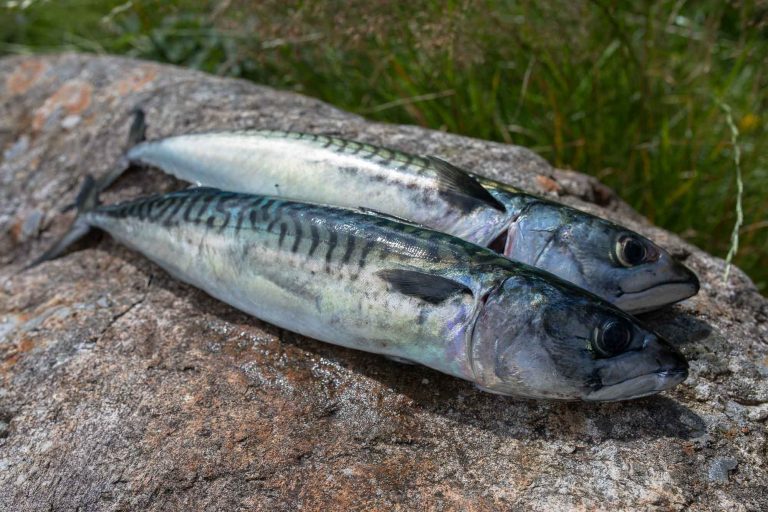
The economic importance of mackerel
Fishing for mackerel is of great economic importance, and Norway is among the countries with the largest catch quota. The traditional Norwegian mackerel fishing has taken place in the Skagerrak and the North Sea. Global warming appears to be affecting mackerel migration patterns though and the largest concentrations of these species are now found in the front between Atlantic and Arctic waters.
Some marine researchers believe that the stock of mackerel in the Norwegian Sea is far too large and that the mackerel empties the sea area of zooplankton. Previously whales, sharks, sturgeons and other predatory fish regulated the mackerel stocks. But since there is a steep decline in those populations mackerel seem to thrive. Seabirds such as crutches and puffins and fish such as herring and salmon are in decline due to the large mackerel stock.
Find more inspiration on Scandinavian fish here
↓↓↓


